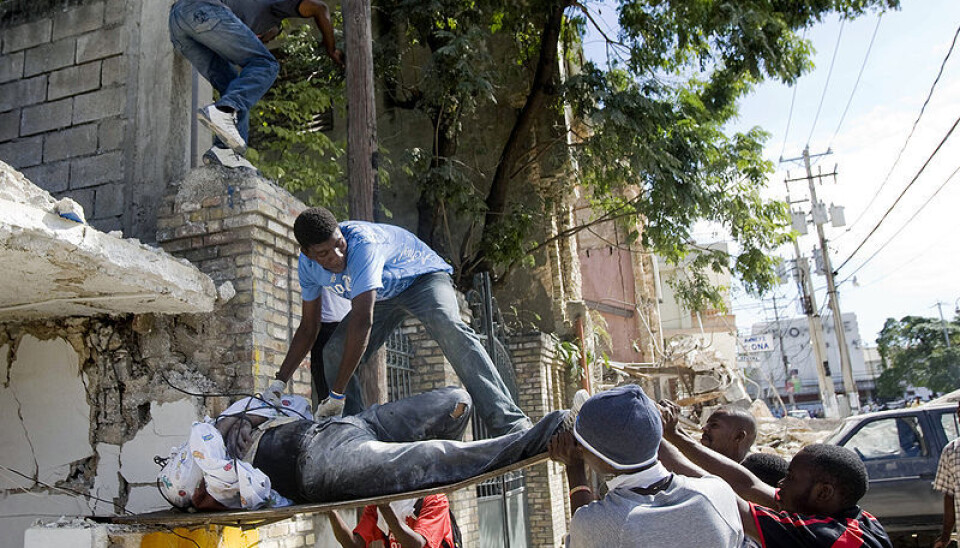This article was produced and financed by The Research Council of Norway

Mitigating damage from landslides, tsunamis and earthquakes
Where are the risks of landslide greatest? What makes a tsunami dangerous? Why are some people harder hit by earthquakes than others? A research centre for geohazards provides the answers needed to better deal with these types of risks.
Denne artikkelen er over ti år gammel og kan inneholde utdatert informasjon.
Landslides and floods are Norway’s two main geohazards. Internationally, earthquakes pose the number one danger, with floods as the second most dangerous event with catastrophic ramifications for human life and health.
More surprising, however, is that high winds also take many lives.
The tsunamis of recent years were highly destructive disasters. But since they strike seldom, fortunately, tsunamis represent a smaller danger than earthquakes, for example.
Saving lives, reducing damage
Saving human lives and limiting material losses in natural catastrophes have been the main objectives of The International Centre for Geohazards (ICG), hosted by the Norwegian Geotechnical Institute (NGI) in Oslo.
New knowledge can mitigate the destructiveness of geohazards, and this knowledge must be shared as widely as possible to reduce damage to infrastructure and the environment while saving human lives the next time a natural disaster strikes.
Experience has shown that the poorest people are most at risk from natural disasters. The 2010 earthquake in Haiti is an example. But wealthy countries such as Norway are by no means immune from the forces of nature. Landslides and avalanches have taken more than 2000 lives in Norway over the past 150 years.
Seabed research
In Offshore Geohazards, a set of projects in which ICG researchers studied landslide risks on the seabed of the North Sea.
“Several enormous landslides have occurred on the North Sea seabed,” says ICG Director Farrokh Nadim. “Underwater slides threaten oil platforms and other structures, especially now that these are being placed in deeper waters. Underwater landslides can also damage pipelines.”
“There is no question that Norwegian expertise in this field has advanced substantially because of ICG’s work.”
Knowledge chain for tsunami risk
The geohazard experts based in Oslo also emphasise a third research area: ICG’s interdisciplinary tsunami project.
“With this project,” continues Nadim, “we had the opportunity to combine expertise in both underwater earthquakes and on the behaviour of waves approaching land."
"We also tied in expertise on buildings and infrastructure on this project. In this way we’ve developed a continuous knowledge chain for risk posed by tsunamis to humans.”
When asked what is the greatest challenge this research field faces in years to come, the director singles out risk management.
“How are decisions taken? What is being done wrong? Dealing with natural disasters involves more than purely technical matters. The societal perspective is just as important. So we definitely need to learn to manage the societal risks of natural catastrophes better.”
Translated by: Darren McKellep/Carol B. Eckmann






























